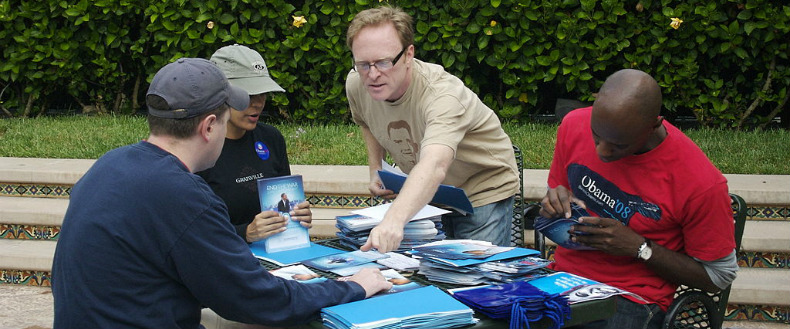Photo: GOTV in the good old days before coronavirus, in this case by a 2008 Obama field team.
Talking this week with clients planning digital GOTV campaigns for the fall reminded me of a pandemic-year rule: start early.
With many voters afraid to vote in person and facing the prospect of mail-in ballots stuck in an overwhelmed (and possibly sabotaged) post office, GOTV campaigns need to hit the ground as soon as early voting begins in their target states. In fact, they should start earlier: voters should be primed to act as soon as their mail-in ballot arrives or drive-through voting opens. A vote banked is a vote that you don’t have to pursue at the last minute.
For some great advice on digital tactics, check out this piece by Meghan Rutherford on M&R’s blog covering ad timing, placement, content, targeting, tracking and more. A comprehensive GOTV campaign will also include field outreach if possible, though the pandemic will naturally limit in-person contact. Still, field campaigns can rely on phone calls (including virtual phone banks), texts, peer-to-peer personal outreach via relational organizing tools and similar end-runs around physical distancing.
One trick will be knowing who’s voted and who hasn’t, since many absentee ballots won’t be logged until Election Day or later, and local election officials may be too overwhelmed to update the voter file in real time in any case. Where states allow field staff or volunteers to collect ballots from voters, a campaign can at least track those. And, phone canvassing (“have you voted yet this year?”) can help cross at least some early voters off the list, particularly in states where outside organizations are allowed to coordinate and use shared data. But many of campaigns will effectively be flying blind, unable to know who’s voted early and who needs a nudge. Welcome to politics in 2020.
– cpd

